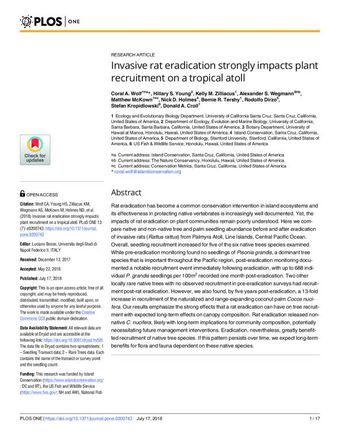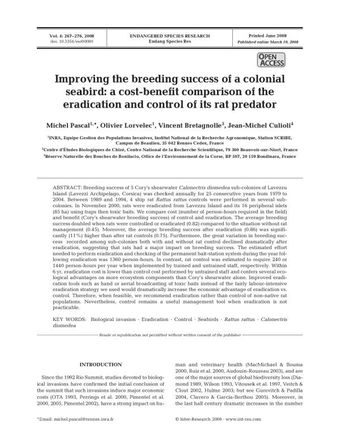Biology and Impacts of Pacific Island Invasive Species. 11. Rattus rattus, the Black Rat (Rodentia: Muridae)
- Description:
- The black rat, roof rat, or ship rat (Rattus rattus L.) is among the most widespread invasive vertebrates on islands and continents, and it is nearly ubiquitous on Pacific islands from the equatorial tropics to approximately 55 degrees latitude north and south. It survives well in human-dominated environments, natural areas, and islands where humans are not present. Rattus rattus is typically the most common invasive rodent in insular forests. Few vertebrates are more problematic to island biota and human livelihoods than R. rattus; it is well known to damage crops and stored foods, kill native species, and serve as a vector for human diseases. Rattus rattus is an omnivore, yet fruit and seed generally dominate its diet, and prey items from the ground to the canopy are commonly at risk and exploited as a result of the prominent arboreal activity of R. rattus. Here we review the biology of this invasive species and its impacts on humans and the insular plants and animals in the Pacific. We also describe some of the past management practices used to control R. rattus populations on islands they have invaded.
- Display date:
- 2014
- Collections:
- Secretariat of the Pacific Regional Environment Programme (SPREP)
- Publisher:
- USDA National Wildlife Research Center
- Content partner:
- Secretariat of the Pacific Regional Environment Programme (SPREP)
- Availability:
- Not specified
-
Copyright status: All rights reservedFind out more about what you are able to do with this itemThis item is all rights reserved, with means you'll have to get permission from Secretariat of the Pacific Regional Environment Programme (SPREP) before using it. For more information, please see our use and reuse page.What can I do with this item?Non-infringing useNZ copyright law does not prevent every use of a copyright work, and this item may be hosted by an international institute or organisation. You should consider what you can and cannot do with a copyright work.No sharingYou may not copy and/or share this item with others without further permission. This includes posting it on your blog, using it in a presentation, or any other public use.No modifyingYou are not allowed to adapt or remix this item into any other works.No commercial useYou may not use this item commercially.
Related items
Welcome and warm Pasifik greetings
The information on this site has been gathered from our content partners.
The names, terms, and labels that we present on the site may contain images or voices of deceased persons and may also reflect the bias, norms, and perspective of the period of time in which they were created. We accept that these may not be appropriate today.
If you have any concerns or questions about an item, please contact us.


